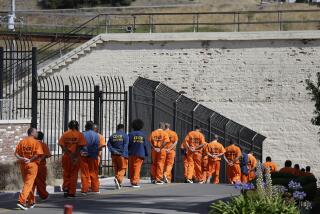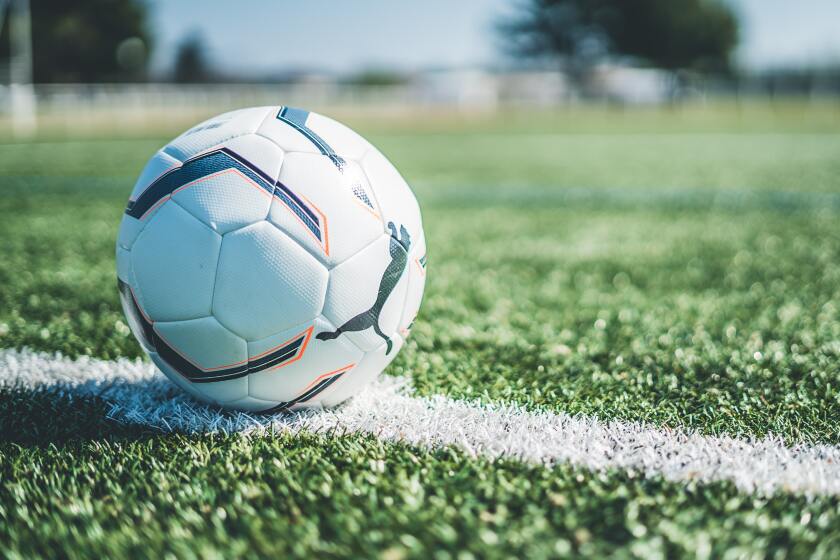STRIKE III : Well, There’s Always Football, Basketball and Hockey--or Is There?
- Share via
Baseball sure isn’t going so great right now, and guess what. Things may get a lot worse for pro sports fans. This strike stuff could spread.
The second baseball strike in the last four years just may be the first signal of the beginning of a new wave of unrest among the ball-playing labor unions in the major professional sports leagues.
The other professional leagues are already bracing for some problems of their own when their union agreements expire.
The National Basketball Assn. will lose its collective bargaining agreement after the 1986-87 season, and there are indications the negotiations may get sticky.
The National Football League Players Assn. invented the players’ union strike in 1970--a five-day walkout during training camp--and liked it so much they struck again in 1974 and 1982, but the football players have a union contract with the NFL until the 1987 season.
The hockey players are the first to rattle their sticks. Only minutes after the baseball strike was announced, the National Hockey League Players Assn. was discussing the possibility of its first strike unless major contract changes were not made by club owners.
But wait. The NHLPA said it wouldn’t strike until the 1986-87 season. Thoughtful of them to give so much notice.
And over what issues would the hockey players strike? Why, for true free agency and against compensation, of course, which seem to be what most sports strikes are about.
Alan Eagleson, head of the hockey players’ union, said his clients also want a better pension plan. But the real problem is with the compensation categories in the current collective bargaining agreement between the union and the NHL.
The union argues that compensation discourages teams from pursing free agents and thus keeps player salaries down. Under the rules, a team that loses a free agent to another team receives compensation according to the amount of money for which the free agent signs.
For instance, if a free agent signs with a new team for up to $99,000, his old team gets a third-round draft choice as compensation. If a free agent’s contract is for $100,000-$124,000, his old team gets a second- and a third-round draft pick.
The compensation really gets heavy for any free agent who is signed to a contract of $200,000 or more. The team that loses the free agent is compensated by getting its choice of either two first-round draft picks or a first-round draft pick and a player chosen from the other club, which is allowed to protect only four players.
The hockey players agreed to this deal in the first place because they figured they had no bargaining power anyway, but if you want to see the future of free agency and compensation, check out the NBA, which has never had a strike. Yet.
After the last game of the championship series sometime in June of 1987, all hell is probably going to break loose in the NBA, and nobody knows what’s going to happen. The Robertson Agreement, which is the league’s collective bargaining agreement and basically affects free agency, will expire then, and so will the salary cap.
Larry Fleisher, general counsel for the NBA players’ association, is setting his sights on a big target. He would like to do away with the draft.
“We would act to eliminate all restraints (of player movement),” Fleisher said. “A player should be like any other American seeking employment with whomever he wishes.”
The college draft is part of the Robertson Agreement, and the NBA is not really very eager to get rid of it.
“Obviously, we feel the draft is important,” said Gary Bettman, general counsel for the NBA.
The NBA avoided a player strike three seasons ago, but that was when the league was on a lot shakier ground than it is now or promises to be in 1987. Carl Scheer, general manager of the Clippers, believes that a healthy league will raise the expectations of the union, perhaps to a level that could mean big labor pains for the NBA.
“Before, when we averted a strike, it was for survival,” Scheer said. “We’re over our earlier problems, but it’s like anything else. When the league becomes more successful, the players want a bigger piece of the pie. I would suspect that would mean the players and the players’ association would want to talk about some pretty large increases.”
At the moment, the most secure professional league is the NFL, which hardly seems fair since football got us into this strike mode in the first place. The NFL’s labor contract with the players’ union is the one that ended a 57-day strike that cancelled 98 games in 1982.
The big issue then was the players wanting a percentage of the gross revenue. They didn’t get it, but they settled for something similar, which was the owners’ guaranteeing to spend a percentage on player costs.
Jim Miller is a member of the NFL Management Council and will negotiate the league’s next contract with the players’ union. When Miller learned of the baseball strike Tuesday, he wondered about its effect.
“If this one lasts any time at all, it’ll really harden the fans, I think,” he said. “It’s really sad. But maybe something good will come out of it. Maybe our players will think about this strike a couple years down the road.”
The way things are going in the strike business, there may be many more to think about.
More to Read
Go beyond the scoreboard
Get the latest on L.A.'s teams in the daily Sports Report newsletter.
You may occasionally receive promotional content from the Los Angeles Times.










